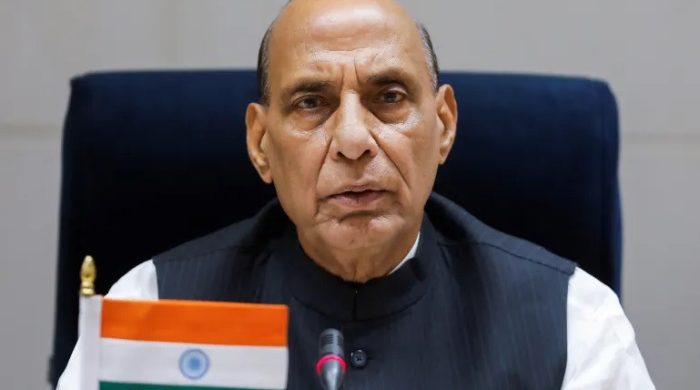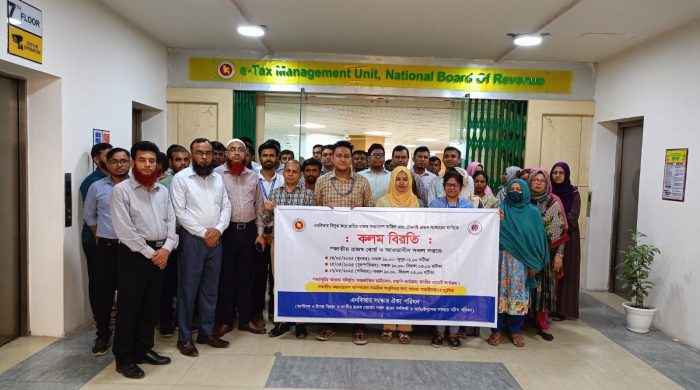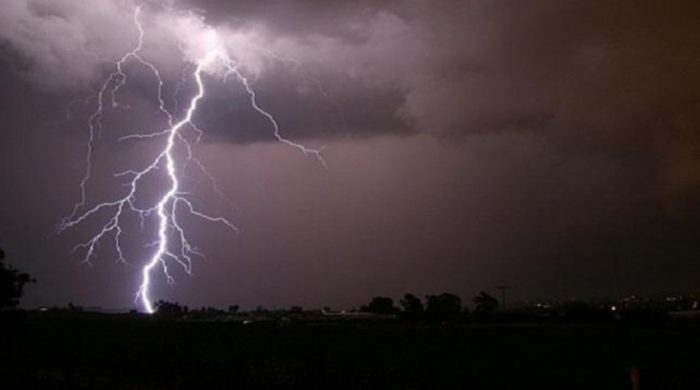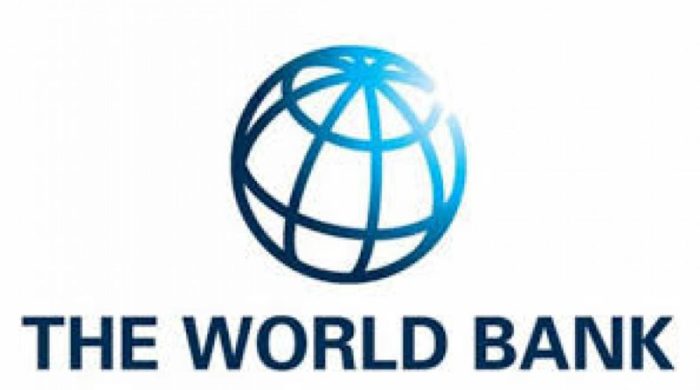Could climate crisis impact the 2026 World Cup?

- Update Time : Saturday, September 16, 2023
- 61 Time View

“One player is going to die.”
That was the stark warning from Russian tennis player Daniil Medvedev as he battled the heat, humidity and Andrey Rublev at the US Open in New York last week. It came just a week after some races at the World Athletics Championships in Budapest were moved because of fears over the safety of competitors.
With extreme temperatures more likely across the globe as a result of climate change, these kind of impacts are becoming the new reality for sport.
In less than three years’ time, the 2026 men’s World Cup final will cap an expanded tournament of 48 teams playing 104 matches in six summer weeks across Canada, the United States and Mexico.
The previous edition – held in Qatar in 2022 – was moved from June and July, when temperatures regularly exceed 40C and can reach 50C, to November and December to protect players and fans.
But after a record-breaking summer of extreme heat and wildfire air pollution – in which 96% of the US population (318 million people) experienced an extreme heat alert, 175 cities had at least a week of extreme heat, and 45 cities witnessed unusually high temperatures for more than half of their summer days – could Fifa have another issue on its hands?
Some of the world’s leading sport scientists certainly think so.
Here are some of the factors to consider:
On 15 July, an all-time high of 48C was recorded in Phoenix, Arizona. Temperatures hit 43C for 19 days running.
In Texas this summer, temperatures were above 38C for 27 consecutive days. The heat forced the closure of businesses and public facilities such as parks, museums and zoos.
The US government’s Heat Index – which measures temperature plus humidity – puts readings of 32C at ‘extreme caution’ for sporting activity and 39C at ‘danger’. Miami, a 2026 host city, has registered 38C or higher every day for more than a month on the Heat Index.
In total, about 100 million people have experienced very poor air quality this summer as Canadian wildfires spread smoke across several cities.
University of Portsmouth professor Mike Tipton specialises in extreme temperature impacts on the human body and has worked with Team GB athletes, including triathlete Jonny Brownlee after his infamous collapse from heat stress in Mexico in 2016.
“I would have concerns,” Prof Tipton told BBC Sport. “They would range from players through to officials and spectators.
“Probably the best approach is then to hope for the best but plan for the worst. That would mean giving some consideration to moving the event to a different time.”
Prof Tipton believes if the World Cup is played in the extreme temperatures seen this summer in North America, performance and strategy will change.
“You simply cannot physically achieve what needs to be achieved and play the same game as you would play in Liverpool in the winter as you would under a ‘heat dome’ in America in the summer,” he said.
Almost 30 years ago, at the 1994 men’s World Cup in the United States, news reports recorded on-field temperatures over 100F during several mid-afternoon kick-offs, with the New York Times reporting 160 fans were treated for heat-related stress and 12 were hospitalised.
Then there is the smoke…
The Canadian wildfire season, stoked by above-average temperatures this summer, is now the worst on record.
Fires have burned nearly 15 million hectares (37.5 million acres) of land.
Last weekend there were more than 1,000 active fires burning in Canada.
The smoke drifted into the US, with 18 states under air-quality alerts this summer, meaning people were advised to stay indoors, and baseball, football and even indoor basketball games were cancelled.
World Cup 2026 host cities Vancouver, Seattle, Boston, Toronto, Philadelphia and New York have all been affected by wildfire smoke.
Professor Michael Koehle is a respiratory health academic based at the University of British Colombia, Vancouver, and says being exposed to wildfire smoke over consecutive days “will have health consequences”.
“The problem is you can’t predict these things very far in advance,” said Prof Koehle, who has worked with Athletics Canada and the Canada men’s football team. “I don’t know how you manage the consequences of disruption.
“If the local Public Health Agency says you cannot hold this match, how do you handle that?”
Prof Koehle said it would be a “logistical nightmare” to move matches at short notice out of North America if air quality is poor in 2026, adding: “It’s certainly going to be easier for the players and the spectators if it’s held in April, May, September or October, due to the risk of disruption.”
Critics believe Fifa has to address the emissions it is creating. By Fifa’s own estimation, the 2026 World Cup will be the most emitting tournament it has ever staged.
Its claims Qatar 2022 would be carbon-neutral were called “dangerous and misleading” by environmentalists, and a Swiss regulator ruled Fifa made “unsubstantiated claims” about the reduced climate impact of the tournament.
Mexico and the USA held men’s World Cups in 1986 and 1994 respectively, while Canada hosted the Women’s World Cup in 2015.
However, in recent years all countries have seen an increasingly hostile climate.
“Scientists believe this unprecedented heatwave was made five times more likely due to human-induced climate change,” says BBC weather forecaster Simon King.
“While these scenarios may not occur during the World Cup in 2026, the fact is climate change makes it more likely.”
What do the players think?
The impacts of heat are already being felt by players. While playing in Houston – a 2026 host city – back in 2017, England international Rachel Daly had to be taken to hospital because of heat exhaustion.
Monterrey is another 2026 host city – and former England player Gary Lineker played there during the 1986 World Cup. He recalls it being “the hottest match I ever played in”.
“We played in 43-44C,” he said. “I think I lost about 12 pounds in fluids. In the second half I was dizzy and couldn’t really perform. Most of the players were the same… it was ridiculous.
“I’d like to see Fifa worry more about things like climate change generally; it’s something Fifa really need to look at.”
In a paper published by the British Medical Journal this year – and co-authored by Vincent Gouttebarge, the chief medical officer of global players’ union FifPro – concerns were raised that Fifa guidelines do not go far enough.
“Heat guidelines are often used as the default policy,” it said. “Still, these seem less protective than guidelines in other sports or from countries traditionally exposed to extreme hot conditions.
“Such a concern is likely to be relevant for the 2026 Fifa World Cup that will be held in the traditional June-July window across 16 host cities in Canada, Mexico and USA.”
It recommends 11 “hot tips” which “should be considered and facilitated by governing bodies, competition organisers, clubs, staff members and players”.
Are there any potential options?
The Qatar World Cup was moved seven years in advance to allow plenty of time for the global football calendar to adjust and was always considered a one-off by Fifa. A winter World Cup in 2026 would pose opposite challenges with several host cities such as Vancouver, Toronto and Seattle experiencing sub-zero temperatures.
Speaking to the BBC earlier this year, Fifa vice-president Victor Montagliani suggested stadiums would be “climate controlled”, helping players and fans at the games.
BBC Sport contacted FIFA for comment and was referred to the controls and significant considerations that are already in place. These include the monitoring of temperatures by officials – with referees advised to take water breaks when necessary, climatic controls in some of the stadiums, and the fact the allocation and scheduling of matches will aim to minimise the effects of high temperatures in line with analysis of the climate in the host cities.
Detail on exact kick-off times has not yet been released, but Prof Tipton suggested only early morning starts would offer “significant” respite.
Climate controls include roofs on some stadiums. Indoor arenas don’t guarantee a safe environment, though, with netball player Amy Steele suffering career-ending heat exhaustion when playing indoors.
Another factor will be the provision of water for the expected travelling support of at least a million people, and the related energy consumption demands to help keep fans cool inside stadiums, when public buildings have had to close this year.
It is also anticipated there will be additional training grounds which don’t have roofs.
Montagliani added: “Looking forward, it is not impossible to change tournaments, as we have seen, but I don’t think that is going to be the solution.
“Having them play winter in Toronto might not be ideal or in Chicago or in Philadelphia. I think there are pros and cons either way. The reality is, winter, summer, spring or fall it doesn’t change the fact that we need to do whatever we can to help in this whole climate and environment issue, ensuring that our footprint is as minimised as possible, through technology and how you run tournaments.”
On Fifa’s wider climate responsibility, Montagliani said: “The truth of the matter is whether it is a confederation or Fifa or a league or a club, we are not going to change the issue around the climate thing in the world. That has to be done by countries and bigger industries.
“We will try to do our bit, absolutely, and we will try to be cognisant in that. It is very important and we will obviously have experts helping us in that journey. But it is a much bigger issue than football.”



















